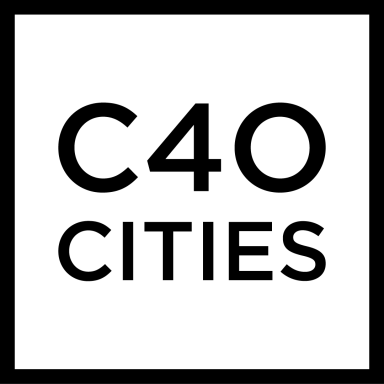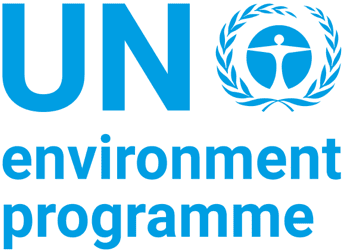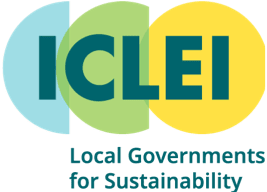Shuaib Lwasa
Integrated Urban Planning
Targeted at urban decision-makers and planners, this course describes how to think about urban planning as an integrated process. You will learn about the concept of integrated urban planning, the benefits of integration, the process for IUP implementation, its applications in the global south through case studies and the use of data for decision making.
Click to enroll in: English | Spanish | French | Portuguese | Bahasa Indonesia | Mandarin
Cities are complex systems that exist to resolve many human problems simultaneously. They provide people with jobs, housing, education, culture, health, entertainment, organization, government. Over time they have evolved to become economic and social epicenters fostering innovative solutions to societal challenges while creating new challenges in their wake. We are now living in an urban era facing a climate crisis. It is more important than ever that we focus efforts to get cities right.
At the local level, decision-making is usually organized to respond to these different needs in siloed structures, narrowly looking at issues like transportation, waste management, drainage, parks, water, education, land use, economic development, and housing, all independently.
This compartmentalized organization does not consider the multifaceted nature of many of the problems that city governments are trying to resolve and ignores the opportunity for integrated planning to make investments, programs and service provision more efficient and co-beneficial across sectors, creating a win-win for city management and residents alike.
To be more impactful, integrated urban planning proposes a different kind of decision-making for cities, in which key actors from different parts and levels of government collaborate to make decisions together, and create projects and services that maximize the use of taxes creating cascading benefits: social, economic and environmental. Additionally, integrated urban planning proposes inclusive approaches in which civil society and minority populations are key actors in the decision-making process.
Integrated urban planning allows us to explore questions such as how to address urban growth, while simultaneously connecting people to sustainable jobs, and providing equitable and just service provision while conserving key ecosystems and resources. To do this effectively, data must be at the core of these types of questions. Cities need to recognize the opportunity and limitations of data to aid in decision-making, drawing from local knowledge including vulnerable and indigenous communities, interagency data collection and coordination and best practices for managing and updating data.
LEARNING OBJECTIVES
In this IUP course you will learn about the process for integrated urban planning through tools, case studies and examples from around the world, from vision to stakeholder engagement, to funding and implementation. We will explore tools to work towards a sustainable city transformation.
Integrated Urban PlanningUnderstand the concept of integrated urban planning and the idea of co-benefits for integrated approaches. |
Process and MethodologiesHave a basic understanding of the process, stakeholders, methodologies and approaches to implement integrated planning approaches. |
Applied ApproachesExplore the application of integrated approaches in the urban south, its advantages and challenges. |
Use of DataUnderstand how the use of data is central for the implementation of integrated approaches, and look at one application in urban biodiversity. |
- Duration
-
3 hours
- Institution
-
World Resources Institute
- Languages
-
English (French, Spanish, Portuguese, Indonesian Bahasa and Mandarin Chinese coming soon)
Course Outline
Section 1: What is IUP, why and how is it useful for your city?The first section includes the history and theory underpinning integrated urban planning (IUP) as a practice. It defines IUP including how it is different from traditional master planning. It provides an understanding of the goals of IUP, and why and when it can be adopted by cities to advance strategic projects. Section 1 identifies key enabling conditions for IUP to be effective and lastly and what barriers may impede IUP in your cities. |
Section 2: How can you implement IUP in your city?This unit will walk students through the IUP process (from visioning to stakeholder engagement, baselining, interdependencies) with a focus on the importance of co-benefits, co-production, participatory planning and evidence-based planning processes. |
Section 3: The evolution of IUP in the Global SouthThis unit will demonstrate how IUP has been applied regionally and how it varies based on regional context. |
Section 4: Application of how to use data for integrated planningWe develop general concepts for using data in urban biodiversity strategy, focusing on the Singapore Index on Cities’ Biodiversity as an in-depth case study. We explore indicator development, data research, data sharing and acquisition, data safety and governance, data interpretation, and communication of data insights. |
Course Authors
COLLABORATORS AND REVIEWERS
- Robin King, Director of Knowledge Capture & Collaboration, WRI Ross Center for Sustainable Cities
- Gorka Zubicaray, Urban Development Senior Technical Specialist, WRI Mexico
- Beth Olberding, Impact Management and Monitoring Specialist, U.S. International Development Finance Corporation
- Pablo Lazo, Director of Urban Development, WRI Ross Center for Sustainable Cities
- Lara Caccia, Urban Development Specialist, WRI Brazil Ross Center for Sustainable Cities
- Elsa Lefevre, Programme Manager at the UN Environment Programme
- Prerna Mehta, Associate Director, Urban Development, WRI India
- Anjali Mahendra, Director of Global Research, WRI Ross Center for Sustainable Cities










